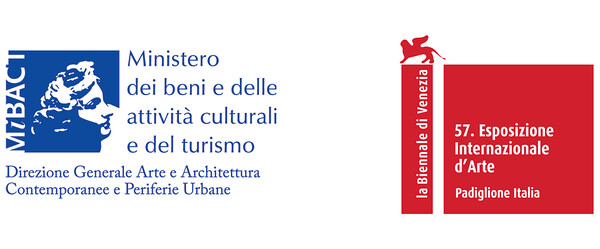Il mondo magico
May 13–November 26, 2017
Commissioned by the Ministry of Cultural Heritage and Activities and Tourism
DGAAP - Directorate-General for Contemporary Art and Architecture Urban Peripheries
Commissioner: Federica Galloni, Director General DGAAP
Realized by the Venice Biennale
Curated by Cecilia Alemani
Il mondo magico is the exhibition for the Italian Pavilion at the Venice Biennale 2017, and it presents ambitious new projects by Giorgio Andreotta Calò, Roberto Cuoghi, and Adelita Husni-Bey. These artists—all born in Italy between the 1970s and the 1980s—emerged on the scene in the first decade of the new millennium and, despite many stylistic differences, share a fascination with the transformative power of the imagination and an interest in magic.
In their works, Andreotta Calò, Cuoghi, and Husni-Bey construct parallel universes that teem with references to magic, fancy, and fable, creating complex personal cosmologies. They see themselves not just as producers of artworks, but as active interpreters and creators of the world, which they reinvent through magic and the imagination. For the invited artists, magic is not an escape into the depths of irrationality but rather a new way of experiencing reality: it is a tool for inhabiting the world in all its richness and multiplicity.
The title of the exhibition is borrowed from Ernesto de Martino’s book Il mondo magico; this Neapolitan scholar developed seminal theories about the anthropological function of magic, which he studied for decades, describing its rituals as devices through which individuals try to regain control in times of uncertainty and reassert their presence in the world.
Within the landscape of contemporary Italian art, Andreotta Calò, Cuoghi, and Husni-Bey use magic as a cognitive instrument for reconstructing and reinventing reality, sometimes through fantasy and play, sometimes through poetry and imagination. This approach allows them to create complex aesthetic universes that eschew the documentary-style narrative found in much recent art, relying instead on an alternative form of storytelling woven from myths, rituals, beliefs, and fairy tales.
Like the rituals described by de Martino, the works of Andreotta Calò, Cuoghi, and Husni-Bey stage situations of crisis that are resolved through processes of aesthetic and ecstatic transfiguration. If one looks closely, these works offer up the image of a country—both real and fanciful—where ancient traditions coexist with new global languages and vernaculars, and where reality and imagination melt together into a new magical world.
Il mondo magico will be accompanied by a bilingual catalogue published by Marsilio with essays by Giovanni Agosti, Cecilia Alemani, Giuliana Bruno, Barbara Casavecchia, Fabio Dei, Brian Dillon, Silvia Federici, Marina Warner, and Chris Wiley.

